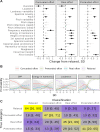The honest sound of physical effort
- PMID: 37033726
- PMCID: PMC10078454
- DOI: 10.7717/peerj.14944
The honest sound of physical effort
Abstract
Acoustic correlates of physical effort are still poorly understood, even though effort is vocally communicated in a variety of contexts with crucial fitness consequences, including both confrontational and reproductive social interactions. In this study 33 lay participants spoke during a brief, but intense isometric hold (L-sit), first without any voice-related instructions, and then asked either to conceal their effort or to imitate it without actually performing the exercise. Listeners in two perceptual experiments then rated 383 recordings on perceived level of effort (n = 39 listeners) or categorized them as relaxed speech, actual effort, pretended effort, or concealed effort (n = 102 listeners). As expected, vocal effort increased compared to baseline, but the accompanying acoustic changes (increased loudness, pitch, and tense voice quality) were under voluntary control, so that they could be largely suppressed or imitated at will. In contrast, vocal tremor at approximately 10 Hz was most pronounced under actual load, and its experimental addition to relaxed baseline recordings created the impression of concealed effort. In sum, a brief episode of intense physical effort causes pronounced vocal changes, some of which are difficult to control. Listeners can thus estimate the true level of exertion, whether to judge the condition of their opponent in a fight or to monitor a partner's investment into cooperative physical activities.
Keywords: Effort; Voice; Honest signals; Speech; Vocal communication.
©2023 Anikin.
Conflict of interest statement
The author declares that he has no competing interests.
Figures




References
-
- Anikin A, Lima CF. Perceptual and acoustic differences between authentic and acted nonverbal emotional vocalizations. Quarterly Journal of Experimental Psychology. 2018;71:622–641. - PubMed
-
- Anikin A, Reby D. Ingressive phonation conveys arousal in human nonverbal vocalizations. Bioacoustics. 2022;31:680–695. doi: 10.1080/09524622.2022.2039295. - DOI
Publication types
MeSH terms
LinkOut - more resources
Full Text Sources
Research Materials

